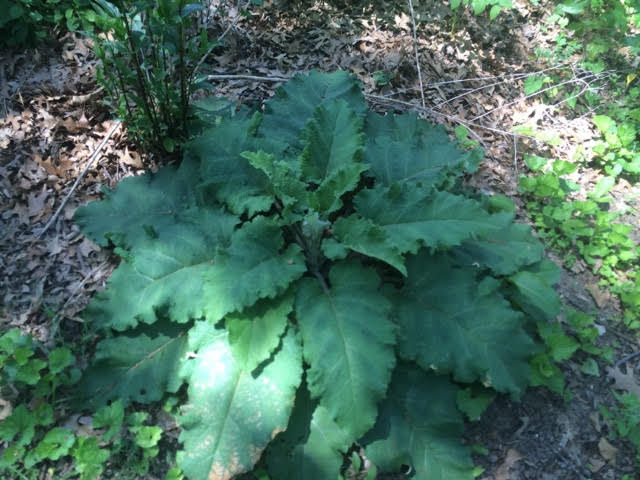Burdock: Arctium lappa
- Shining Waters
- May 30, 2016
- 3 min read

Burdock has some similar characteristics to Yellow Dock - which I wrote about in a previous blog. It is also a "bitter" and "blood purifier". Typically the root is harvested, dried and used medicinally (powdered or made into tincture or tea) and it is often used along with yellow dock and dandelion. Burdock is a member of the thistle family. It grows in wooded areas near water. The photo here was taken at Lake Waterford Park in Pasadena, but I have also found it growing in the park across the street from the Baltimore Art Museum in Baltimore City. The leaves of Burdock can get very large.
I love the description of this plant in Mrs. M. Grieve's "A Modern Herbal": ( http://www.botanical.com/botanical/mgmh/b/burdoc87.html ) "A stout handsome plant, with large, wavy leaves and round heads of purple flowers. It is enclosed in a globular involucre of long stiff scales with hooked tips, the scales being also often interwoven with a white, cottony substance. The whole plant is a dull, pale green, the stem about 3 to 4 feet and branched, rising from a biennial root. The lower leaves are very large, on long, solid foot-stalks, furrowed above, frequently more than a foot long heart-shaped and of a grey colour on their under surfaces from the mass of fine down with which they are covered. The upper leaves are much smaller, more egg-shaped in form and not so densely clothed beneath with the grey down. The plant varies considerably in appearance, and by some botanists various subspecies, or even separate species, have been described, the variations being according to the size of the flower-heads and of the whole plant, the abundance of the whitish cottonlike substance that is sometimes found on the involucres, or the absence of it, the length of the flower-stalks, etc. The flower-heads are found expanded during the latter part of the summer and well into the autumn: all the florets are tubular, the stamens dark purple and the styles whitish. The plant owes its dissemination greatly to the little hooked prickles of its involucre, which adhere to everything with which they come in contact, and by attaching themselves to coats of animals are often carried to a distance. 'They are Burs, I can tell you, they'll stick where they are thrown,'" If you have a golden retriever, or other long-haired breed of dog, and you walk near streams, you have no doubt encountered Burdock burs.... Burdock is bitter, alterative and diuretic. What does alterative mean? Alterative herbs help to promote the general restoration of the body to bring the body back into a state of balance. Most alteratives work slowly over time - it's not a "quick fix" but something to be added to the diet on a regular basis to see real results. Burdock is a great remedy for the liver and for skin disorders such as eczema. A decoction of the root may be used and applied externally or taken internally as a tea or tincture. An infusion or poutice made with the leaves of the plant may also be used externally for conditions of the skin. As a bitter, Burdock aids in digestion and helps promote healthy kidney function. It expels uric acid from the body and, therefore, can be helpful in treating gout and rheumatism. The seeds of the plant can also be used in ointments for dry, itchy skin.






























Comments